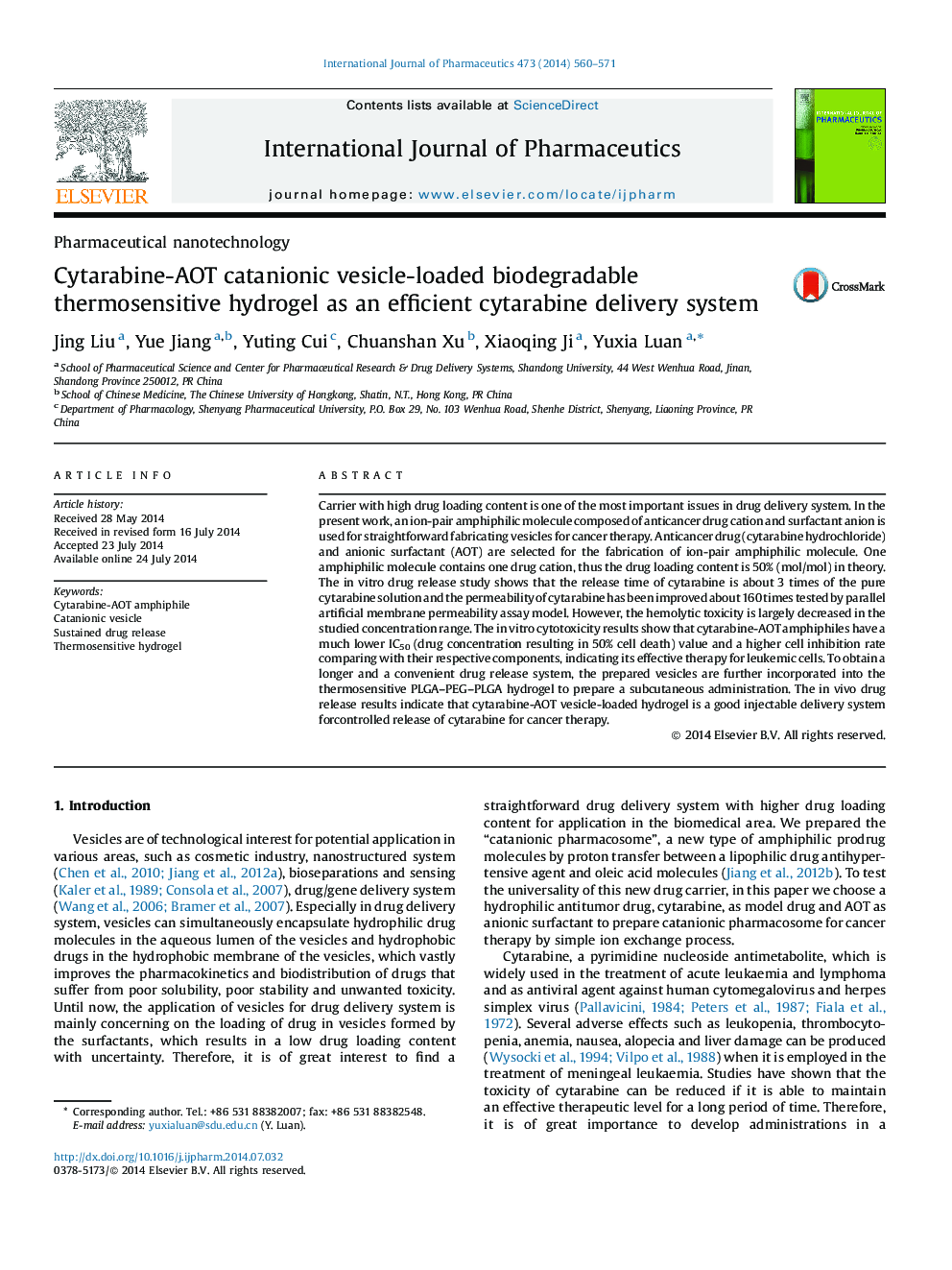| Article ID | Journal | Published Year | Pages | File Type |
|---|---|---|---|---|
| 5819571 | International Journal of Pharmaceutics | 2014 | 12 Pages |
Carrier with high drug loading content is one of the most important issues in drug delivery system. In the present work, an ion-pair amphiphilic molecule composed of anticancer drug cation and surfactant anion is used for straightforward fabricating vesicles for cancer therapy. Anticancer drug (cytarabine hydrochloride) and anionic surfactant (AOT) are selected for the fabrication of ion-pair amphiphilic molecule. One amphiphilic molecule contains one drug cation, thus the drug loading content is 50% (mol/mol) in theory. The in vitro drug release study shows that the release time of cytarabine is about 3 times of the pure cytarabine solution and the permeability of cytarabine has been improved about 160 times tested by parallel artificial membrane permeability assay model. However, the hemolytic toxicity is largely decreased in the studied concentration range. The in vitro cytotoxicity results show that cytarabine-AOT amphiphiles have a much lower IC50 (drug concentration resulting in 50% cell death) value and a higher cell inhibition rate comparing with their respective components, indicating its effective therapy for leukemic cells. To obtain a longer and a convenient drug release system, the prepared vesicles are further incorporated into the thermosensitive PLGA-PEG-PLGA hydrogel to prepare a subcutaneous administration. The in vivo drug release results indicate that cytarabine-AOT vesicle-loaded hydrogel is a good injectable delivery system forcontrolled release of cytarabine for cancer therapy.
Graphical abstractDownload high-res image (165KB)Download full-size imageThe synthesized cytarabine-AOT amphiphilic molecules can self-assemble into vesicles in aqueous solution for realizing the sustained release of its component of anticancer drug cytarabine.
